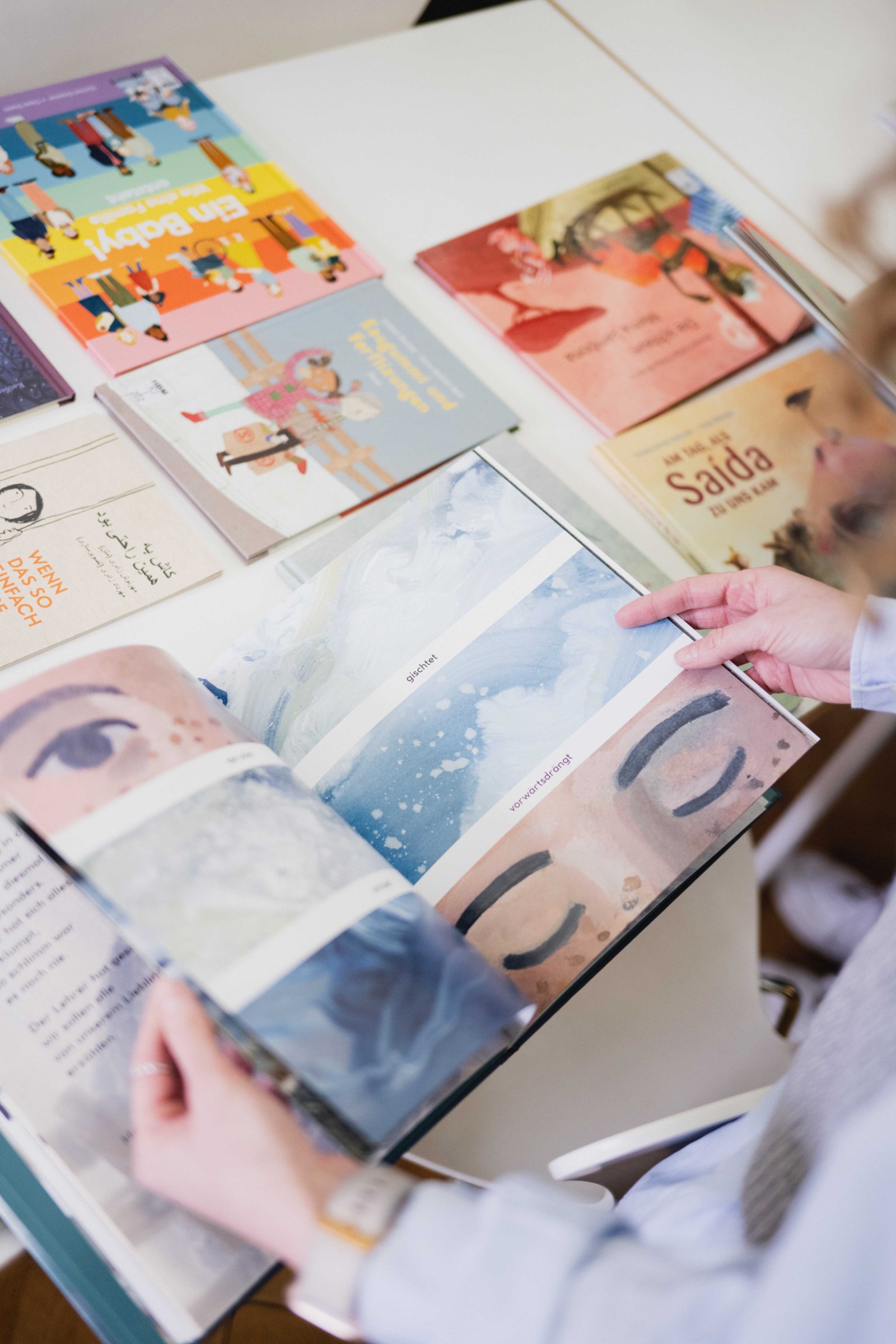WHICH WORLD ARE CHILDREN'S BOOKS ABOUT?
Which world are children’s books about?
Children’s literature that is sensitive to discrimination and diversity: an approach by Stephanie Endter, head of education
“When I began to write at about the age of seven […] all my characters were white and blue-eyed, they played in the snow, they ate apples.” (1) recalls the author Chimamanda Ngozi Adichie in her talk, “The Danger of a Single Story”. The Black writer grew up in Nigeria having never seen snow, and eating mangoes instead of apples – but she created her main characters and plots from the paradigms found in the British literature she had read. Her lived reality was completely absent from these books. It shows just how easily children in particular are influenced by books.
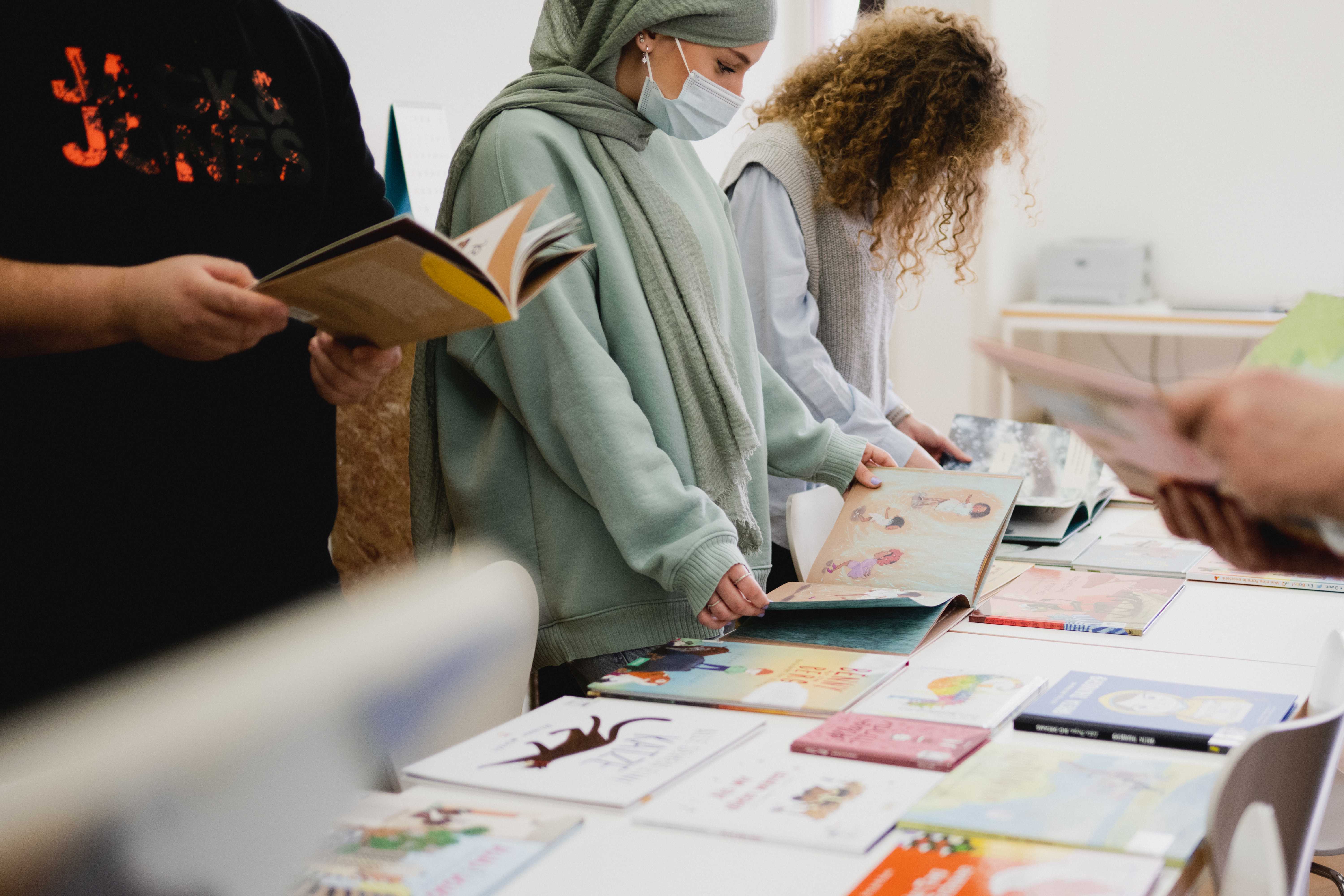 Photo: Peter Wolff
Photo: Peter Wolff
Books are a wonderful opportunity for children and teenagers to become acquainted with the world, to expand their own horizons and experience how different people really live. This is best achieved via books that illustrate diversity without clichés, derogatory representations or omissions. These books can “disrupt clichés and stereotypical images in order to thwart them. Moreover, they can promote equality and strengthen diverse identities, inspiring readers to think critically about and combat injustice and discrimination”. (2)
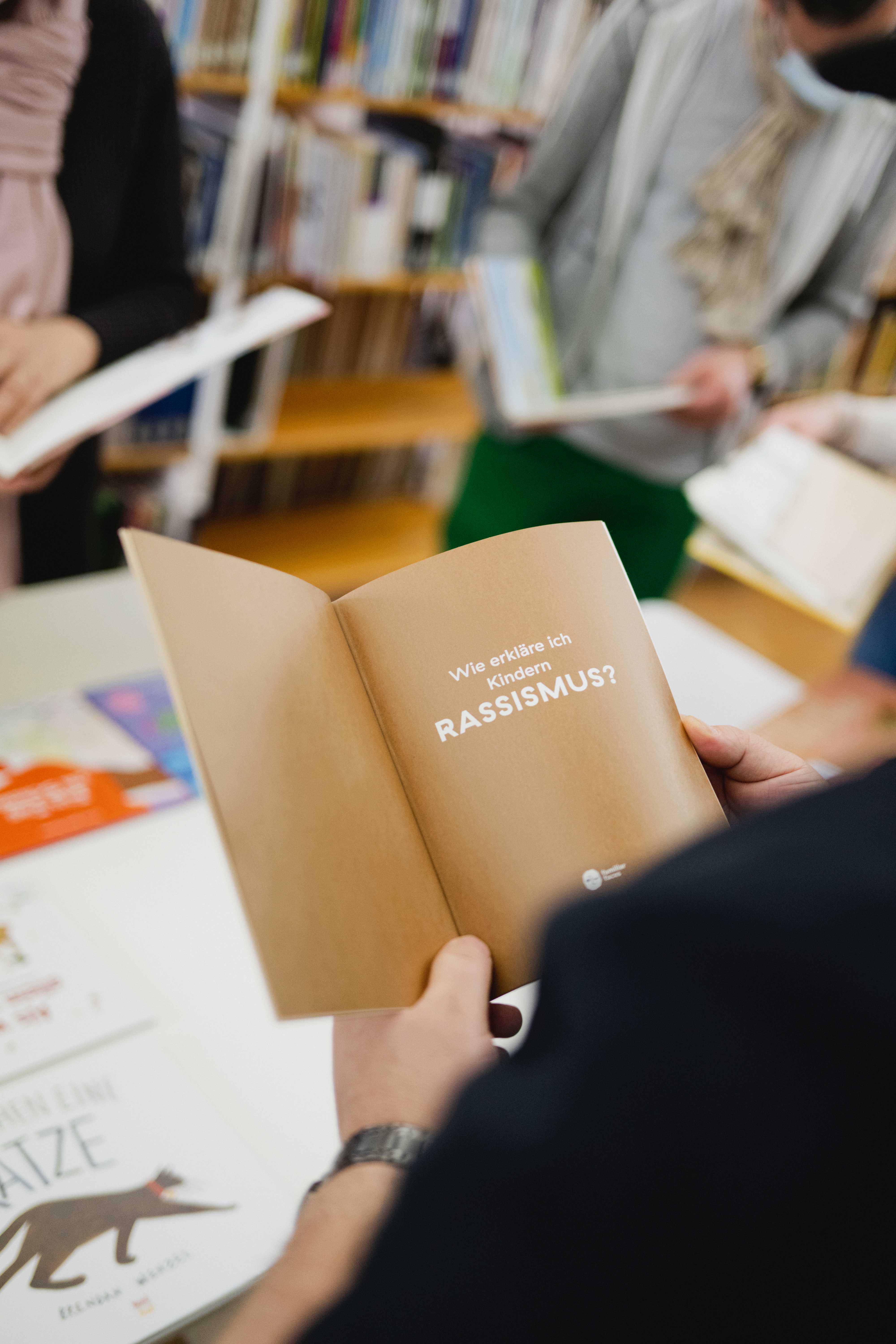 Photo: Peter Wolff
Photo: Peter Wolff
Although increasing numbers of children’s books celebrate diversity, (3) there are still lots of works that reproduce a one-sided dominant perspective of the world. And so it is really important that the people who read books to children cast a critical eye over the contents. Various lists of questions that might prove helpful have already been produced.(4)
These include questions such as:
What is being shown – what is missing?
Who is the main character?
Are the main character and/or other active characters Black, Indigenous or People of Colour?
Do they present assorted gender identities, social statuses, dis/abilities?(5)
Do people’s actions break with stereotypical role models?
Are a range of family set-ups being depicted?
How self-evident is diversity in the book?
Are stereotypes reflected at the visual level?
Is racist language used?
Can each and every child look at this book without the danger of feeling hurt?
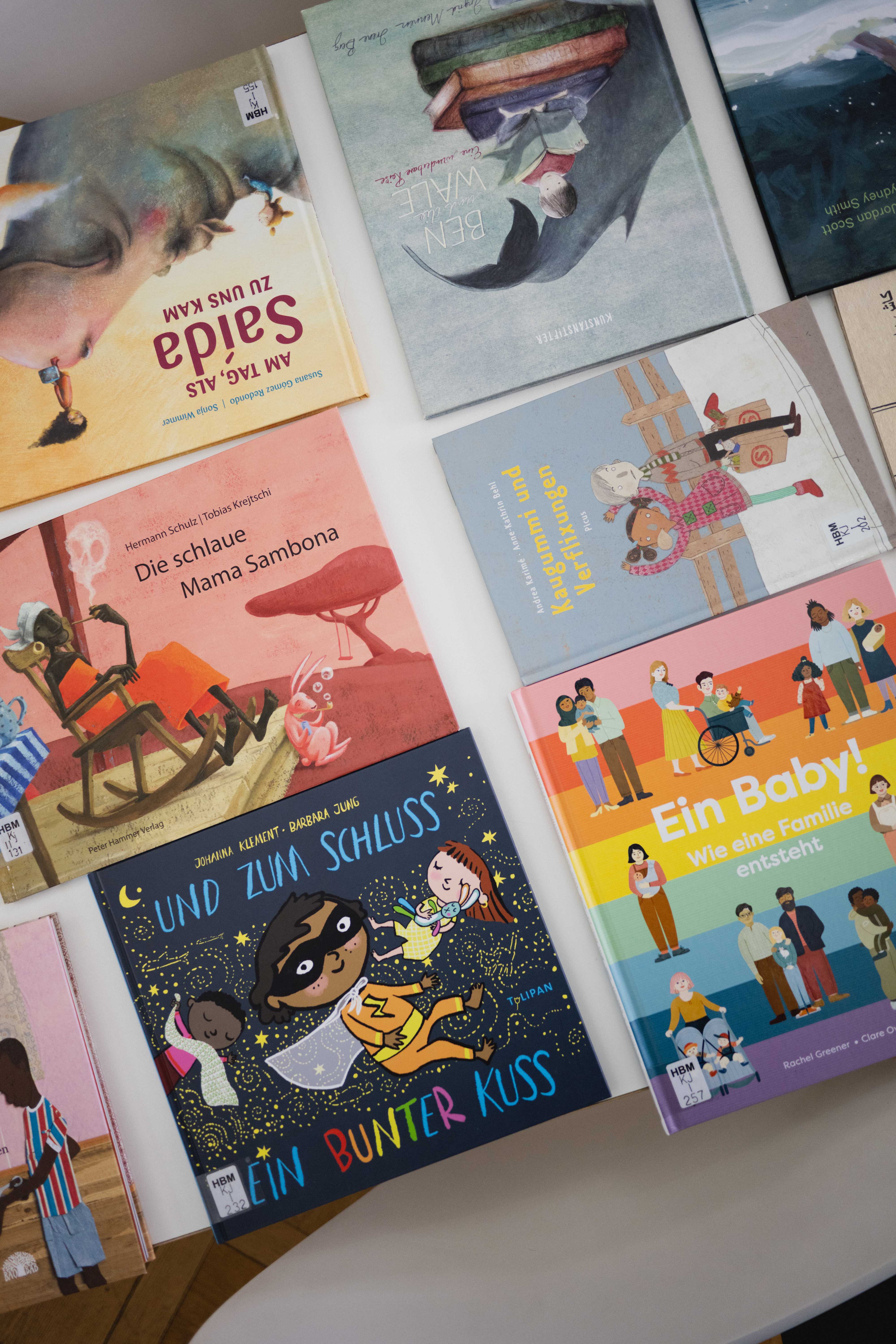 Photo: Peter Wolff
Photo: Peter Wolff
Books can empower children if the latter see themselves reflected in the contents and can positively identify with the people being represented.
In recent years, the Weltkulturen Library has amassed an extensive collection of children’s books that celebrate diversity and come from many different countries. The Weltkulturen Education team use this collection as the basis for workshops that examine children’s books from a critical perspective. In December, as part of a project with the Berufliche Schulen Berta Jourdan in Frankfurt, trainee childcare providers came to the museum for an in-depth exploration of language and representation in children’s books. At a further event led by Rosa Schreieck and Lydia Ernst they looked at various forms of discrimination and used their newly-found knowledge to examine a number of children’s books.
If you are interested in a workshop on diverse literature for children and teens or you would like to browse through the books yourself, please get in touch at
(1) Chimamanda Adichie: Die Gefahr einer einzigen Geschichte - YouTube
(2) Kriterien und Achtungszeichen – Meine Kinderbücher (xn--meinekinderbcher-uzb.de)
(3) You can find further tips for books in German and English at:
buuu.ch • Diverse Kinderbücher
Bücher I Bücher für Kinder aller Hintergründe (tebalou.shop)
(4) Numerous lists of questions about children’s books are available online:
https://situationsansatz.de/wp-content/uploads/2019/11/Checkliste-Kinderbücher.pdf
https://i-paed-berlin.de/wp-content/uploads/intersektionale_kinderbuchliste.pdf
(5) Not reflecting the norm, e.g. male, white, able-bodied, cis-gendered, heterosexual, adult, healthy, Christian, German passport-holder.
The article was published in WELTKULTUREN NEWS 06 "A critical approach", which you can order free of charge here: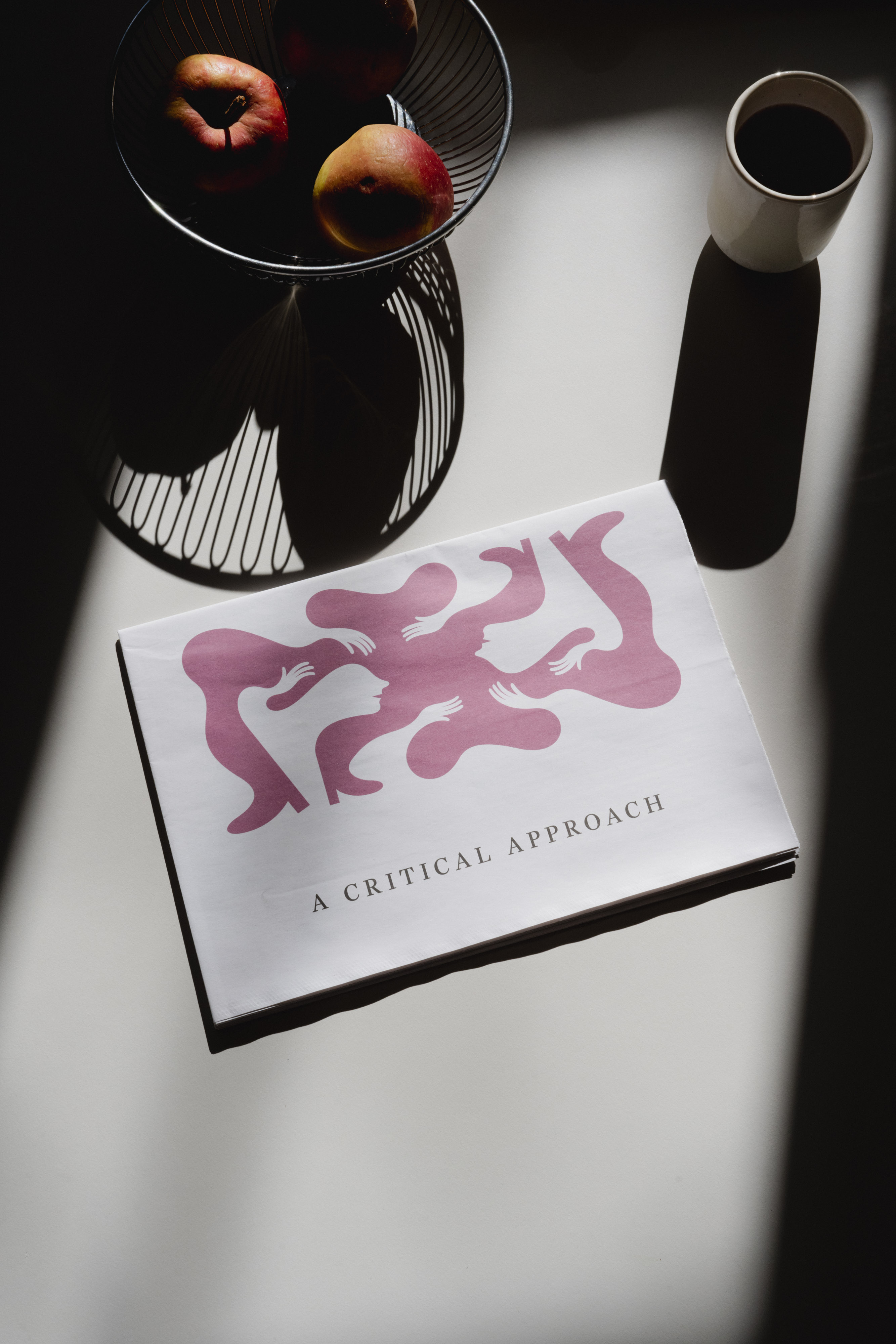 Photo: Peter Wolff
Photo: Peter Wolff

